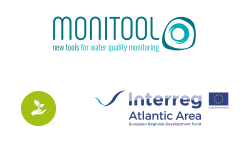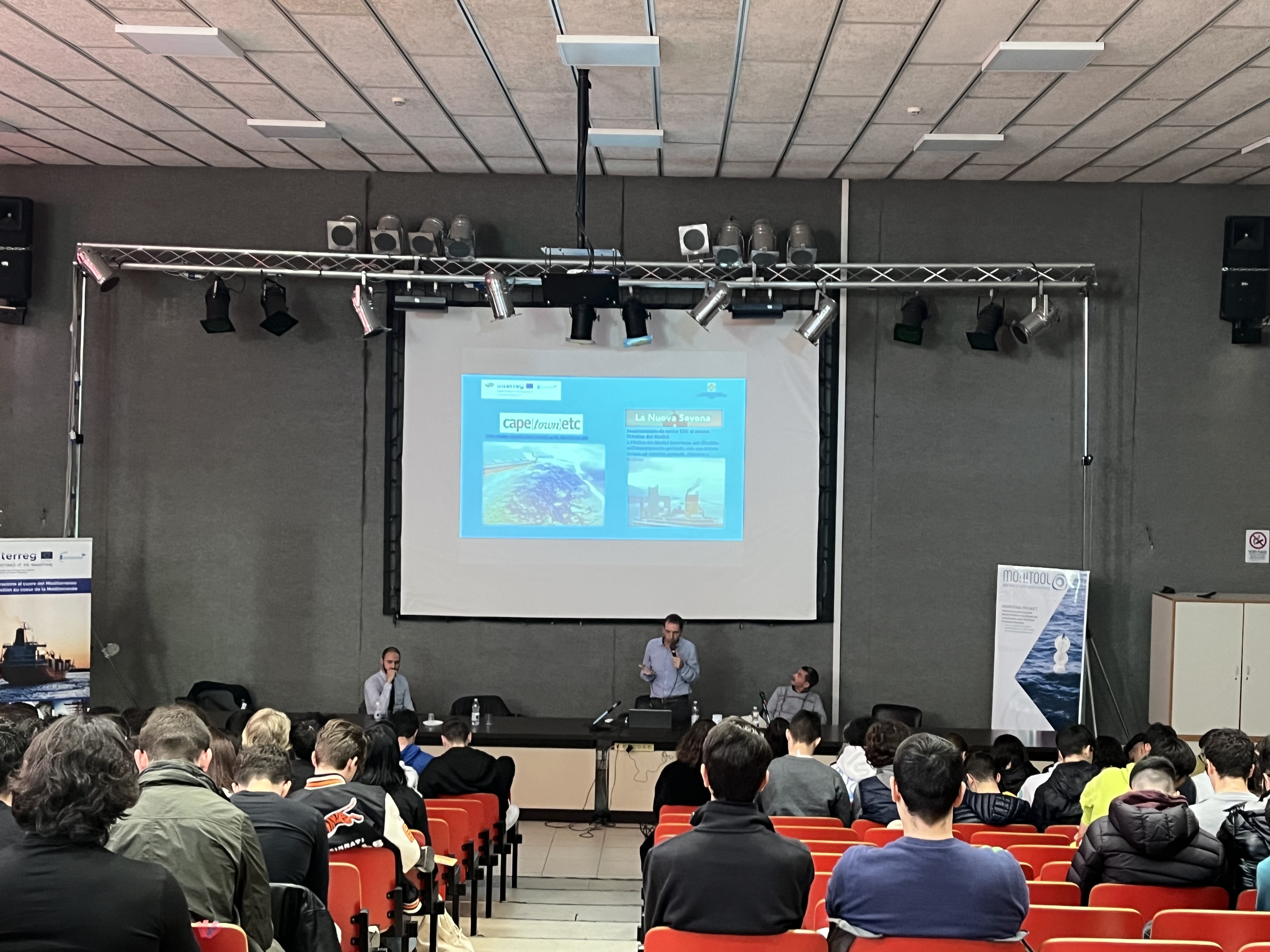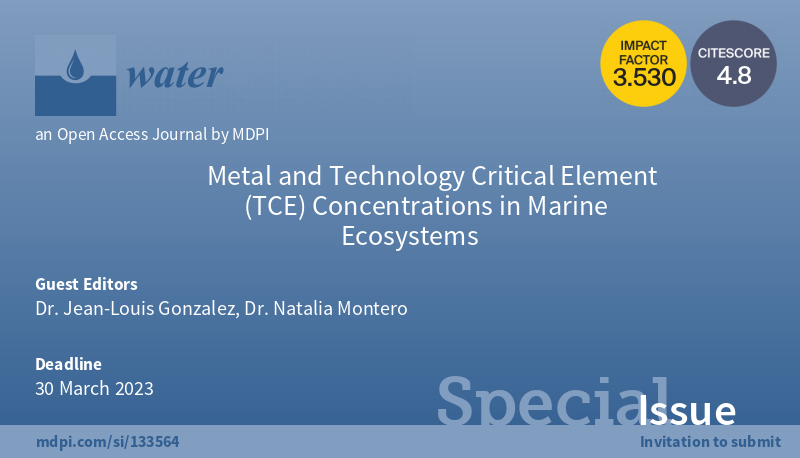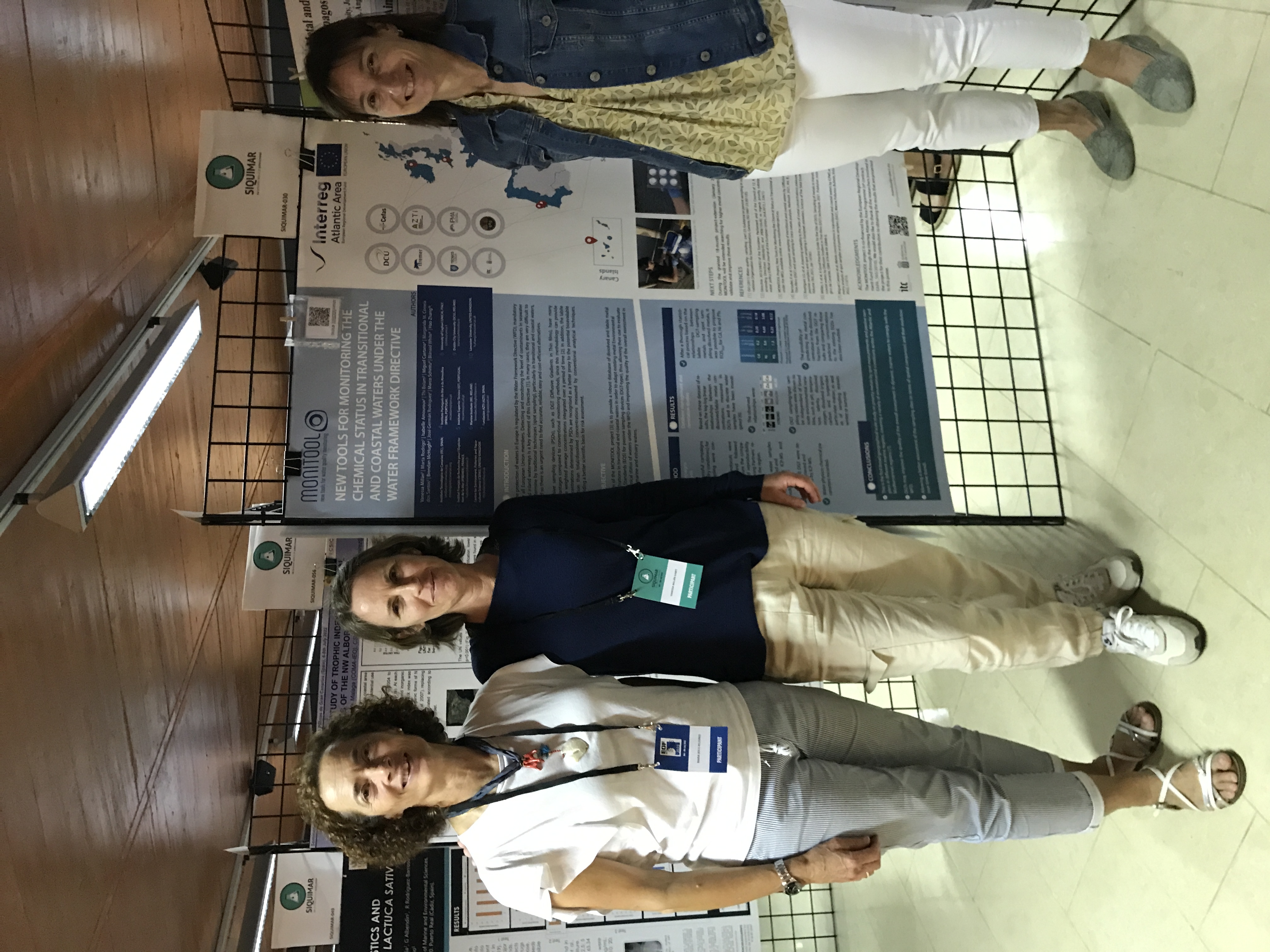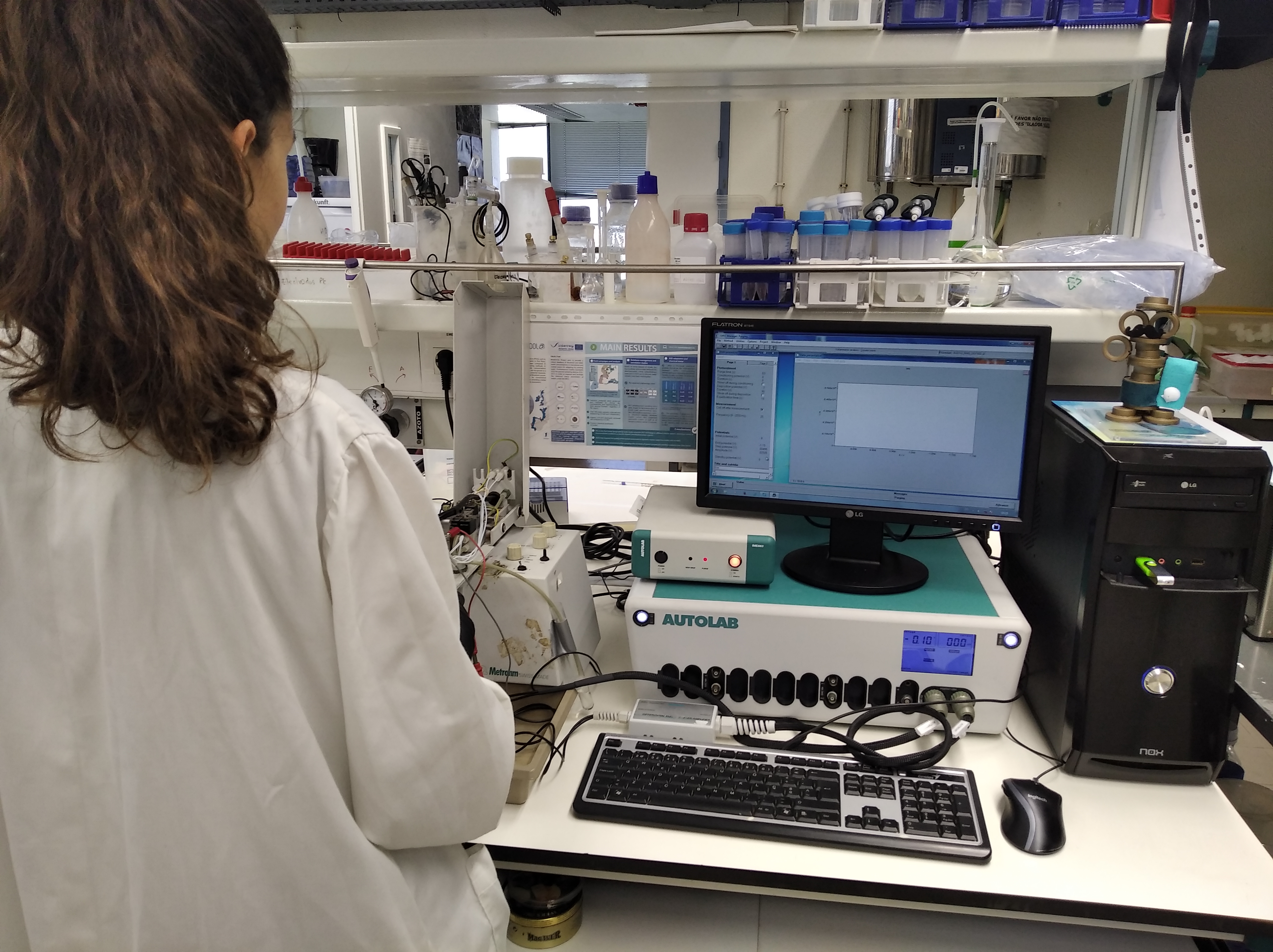Dear stakeholders involved in water quality monitoring and assessment,
The final MONITOOL stakeholders' conference took place on 19 May 2023 in Cagliari, bringing together more than a hundred people involved in environmental monitoring and coastal water quality assessment.
We take this opportunity to inform you of the main outputs of this European Atlantic Area project (2017-2023), involving 8 partners and 10 associated partners, the first of its size (2.48 million euros) focused on DGT (Diffusive Gradients in Thin-films) integrative passive samplers and their potential use for the chemical assessment of marine waters, in the framework of European Directives.
In the context of the Water Framework Directive (WFD), this project aimed establishing meaningful relationships between dissolved concentrations in water samples obtained by spot sampling and 'labile' concentrations measured, in parallel, using DGTs. The ultimate objective was to adapt existing marine water Environmental Quality Standards (EQS) for cadmium, nickel and lead (in assessing the chemical status compliance), as well as to propose adaptations to existing thresholds for several specific metals, such as copper, cobalt, zinc and manganese.
Several studies have discussed the shortcomings of traditional water quality assessment, based on the analysis of spot water samples, recommending, in the context of the WFD, the use of alternative techniques, such as passive samplers (PS), to improve the quality of the assessment. In this sense, DGT-type PS have been widely used to measure trace metals in marine waters. Still, their application for compliance monitoring is hindered by the impossibility of directly comparing the obtained results with the existing EQS.
Within the MONITOOL project, after exploring the relationships between dissolved and labile metal concentrations (see Rodriguez et al., 2021; Caetano et al., 2022), a methodology has been proposed for the adaptation of EQS marine water to DGTs, for cadmium, nickel and lead, providing insights into the steps forward their implementation within European Directives (see Amouroux et al., 2023).
This was accomplished by using a robust database of total dissolved and DGT-labile metal concentrations obtained by concurrent sampling (i.e., spot sampling and DGT) in transitional and coastal waters of the eight European countries participating in the MONITOOL project (EAPA 565/2016) (Rodriguez et al., in prep.).
MONITOOL has also made it possible to develop skills within the consortium and set up a network of expert laboratories to implement and analyse DGTs (see Gonzalez et al., 2022).
To make the use of DGTs easier for external laboratories and end-users (e.g., water agencies, entities involved in the WFD and/or Marine Strategy Framework Directive sampling campaigns, etc.), several highly operational documents have been created and are freely available on the MONITOOL website (i.e., Bersuder, P. et al. (2021), good practice guides for the use of DGTs (see Millán et al, 2021), tutorials showing the different laboratory and field steps, and a dedicated section for the use of DGTs by beginners).
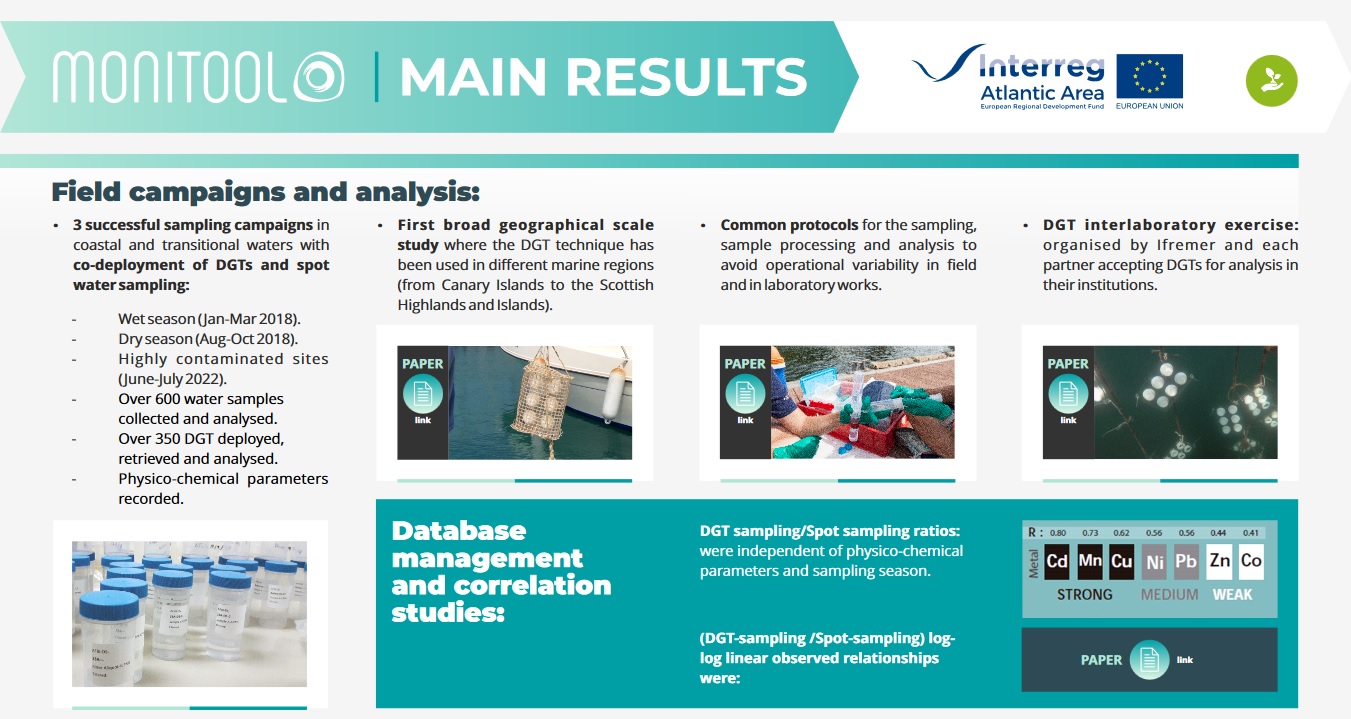
What are the prospects following MONITOOL results?
The results obtained provide the basis for DGT to be used in regulatory applications, but the acceptance of the DGTs at European level and their widespread use would be favored by the following actions:
- To carry out a pilot study, under WFD operational conditions, to ensure 1) that the proposed EQS marine water adaptation to DGT (for Cd, Ni and Pb) are at least as protective as the current EQS marine water used in the WFD assessment process and 2) to acquire the data needed to specify the best sampling strategy when using DGTs (i.e., number of DGT replicates, number of annual deployments, deployment period, etc.).
- Verification of the ability of laboratories to provide satisfactory results (at low limits of quantification).
- Acquiring ecotoxicological data on marine species in parallel with DGT data, to ensure about the toxicological relevance of the adapted EQSDGT for Pb, Cd and Ni.
The consortium will be mobilised to propose these actions in a future MONITOOL2 project, but if you would like to volunteer to launch a pilot study in one of your countries, please do not hesitate to contact us.
We would like to take this opportunity to thank you for your support and trust during the development of this project.
Please accept our warmest regards.
MONITOOL consortium.
July 2023.
References:
Isabelle Amouroux et al. A new approach to using Diffusive Gradient in Thin‑films (DGT) labile concentration for Water Framework Directive chemical status assessment: adaptation of Environmental Quality Standard to DGT for cadmium, nickel and lead. Environmental Sciences Europe (2023) 35:29. https://doi.org/10.1186/s12302-023-00733-4
Jean-Louis Gonzalez et al. An international intercomparison exercise on passive samplers (DGT) for monitoring metals in marine waters under a regulatory context. Science of The Total Environment, Volume 847, 2022, 157499. https://doi.org/10.1016/j.scitotenv.2022.157499
Miguel Caetano et al. Metals concentrations in transitional and coastal waters by ICPMS and voltammetry analysis of spot samples and passive samplers (DGT), Marine Pollution Bulletin, Volume 179, 2022, 113715. https://doi.org/10.1016/j.marpolbul.2022.113715
Philippe Bersuder et al. Concurrent sampling of transitional and coastal waters by Diffusive Gradient in Thin-films (DGT) and spot sampling for trace metals analysis. MethodX. 2021, Vol. 8. p.:101462. https://doi.org/10.1016/j.mex.2021.101462
Rodríguez J.G, et al. Assessing variability in the ratio of metal concentrations measured by DGT-type passive samplers and spot sampling in European seawaters. Science of The Total Environment. Volume 783, 2021, pp: 147001. https://doi.org/10.1016/j.scitotenv.2021.147001
Vanessa Millán et al. A Good Practice Guide for the Use of DGTs. Sampling of metals in transitional and coastal waters by Diffusive Gradient in Thin films (DGT) technique. 2021. Publisher: Instituto Tecnológico de Canarias. ISBN: 978-84-09-30846-0. https://www.monitoolproject.eu/images/Publicaciones/A_Good_Practice_Guide_2023_digital.pdf
The attached document sets out the main results obtained and all the relevant information regarding the MONITOOL project can be accessed in the following link: https://www.monitoolproject.eu/



